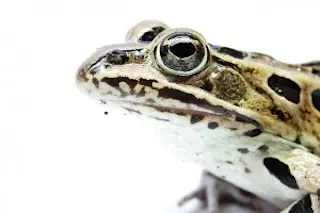You may have noticed that frogs close their eyes when swallowing. But here's a twist: according to this study that has been making the rounds on teh interwebs, they are doing more than just blinking. Here, scientists used X-rays to film frogs while they were chowing down on crickets. It turns out that while swallowing, a frog's eyes actually retract down towards its esophagus. Not only that, but eliminating the ability of the frog to retract its eyes nearly doubles the number of swallows it takes to choke down a single cricket. We're still not quite sure why Kermit never broke out this party trick: it might just have been weird enough to scare off Miss Piggy!
Contribution of eye retraction to swallowing performance in the northern leopard frog, Rana pipiens.
"Most anurans retract and close their eyes repeatedly during swallowing. Eye retraction may aid swallowing by helping to push ...














